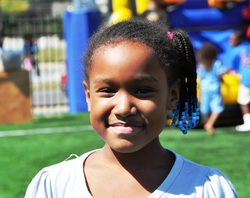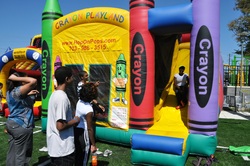Our Community

Deanwood is an historic neighborhood on the edge of Northeast Washington, D.C., bounded by Eastern Avenue to the northeast, Kenilworth Avenue (I-295) to the northwest, and Nannie Helen Burroughs Avenue to the south.
One of Northeast's oldest, consistently African American neighborhoods, Deanwood’s low density population, small wood-frame and brick homes, and dense tree cover give it a small-town character that is unique in the District of Columbia. Much of its housing stock dates from the early 20th century. Several well-known African-American architects, including W. Sidney Pittman and Howard D. Woodson, and many skilled local craftsmen designed and built most of its homes.
Deanwood’s genesis came through slave-based agriculture on land owned mostly by the Deans and the Sheriffs, two related, wealthy white families. The community began its transition from rural to urban development with the 1871 arrival of a branch of the Baltimore and Ohio Railroad along its western boundary. This period after the Civil War offered blacks the opportunity to become landowners. Since then, many notable Washingtonians of various ethnicities have been residents and frequent visitors to the area.
The neighborhood was once home to Nannie Helen Burroughs, an early civil rights leader and the founder of the National Training School for Women and Girls, an independent vocational boarding school for African-American girls. Burroughs’ institute, founded in 1909, educated female students from across the nation, and even from Africa and the Caribbean, to become economically independent young women.
Marvin Gaye (1939-1984) was also born and raised in this neighborhood, and a historic park near Randall was renamed in his memory. From 1921 to 1940, Deanwood was also home to the lively, black-owned Suburban Gardens— the only permanent amusement park ever located within the city limits—that served thousands of African-American residents during a time of racial segregation. Many of Deanwood's families have lived here for generations, which makes it stable and close-knit community.
Today this community, known for its culture of self-reliance and social cohesion, is served by the Deanwood Metro station on the Orange Line and the new Deanwood Library and Community Center just across the street. Both are just blocks from Randall Memorial Church. There are also many churches in Deanwood, which has always had a strong religious life. Randall, founded in 1911, is the only United Methodist church in the immediate area.
Information Sources: Wikipedia ( http://en.wikipedia.org/wiki/Deanwood), “A Self-Reliant People: the Greater Deanwood Heritage Trail” (a brochure published by Cultural Tourism DC) and Amazon.com. Order the book Washington D.C.'s Deanwood (Images of America: DC), produced byThe Deanwood History Committee and available through Amazon.com at http://www.amazon.com/Washington-D-C-s-Deanwood-Images-America/dp/0738553506.
One of Northeast's oldest, consistently African American neighborhoods, Deanwood’s low density population, small wood-frame and brick homes, and dense tree cover give it a small-town character that is unique in the District of Columbia. Much of its housing stock dates from the early 20th century. Several well-known African-American architects, including W. Sidney Pittman and Howard D. Woodson, and many skilled local craftsmen designed and built most of its homes.
Deanwood’s genesis came through slave-based agriculture on land owned mostly by the Deans and the Sheriffs, two related, wealthy white families. The community began its transition from rural to urban development with the 1871 arrival of a branch of the Baltimore and Ohio Railroad along its western boundary. This period after the Civil War offered blacks the opportunity to become landowners. Since then, many notable Washingtonians of various ethnicities have been residents and frequent visitors to the area.
The neighborhood was once home to Nannie Helen Burroughs, an early civil rights leader and the founder of the National Training School for Women and Girls, an independent vocational boarding school for African-American girls. Burroughs’ institute, founded in 1909, educated female students from across the nation, and even from Africa and the Caribbean, to become economically independent young women.
Marvin Gaye (1939-1984) was also born and raised in this neighborhood, and a historic park near Randall was renamed in his memory. From 1921 to 1940, Deanwood was also home to the lively, black-owned Suburban Gardens— the only permanent amusement park ever located within the city limits—that served thousands of African-American residents during a time of racial segregation. Many of Deanwood's families have lived here for generations, which makes it stable and close-knit community.
Today this community, known for its culture of self-reliance and social cohesion, is served by the Deanwood Metro station on the Orange Line and the new Deanwood Library and Community Center just across the street. Both are just blocks from Randall Memorial Church. There are also many churches in Deanwood, which has always had a strong religious life. Randall, founded in 1911, is the only United Methodist church in the immediate area.
Information Sources: Wikipedia ( http://en.wikipedia.org/wiki/Deanwood), “A Self-Reliant People: the Greater Deanwood Heritage Trail” (a brochure published by Cultural Tourism DC) and Amazon.com. Order the book Washington D.C.'s Deanwood (Images of America: DC), produced byThe Deanwood History Committee and available through Amazon.com at http://www.amazon.com/Washington-D-C-s-Deanwood-Images-America/dp/0738553506.

